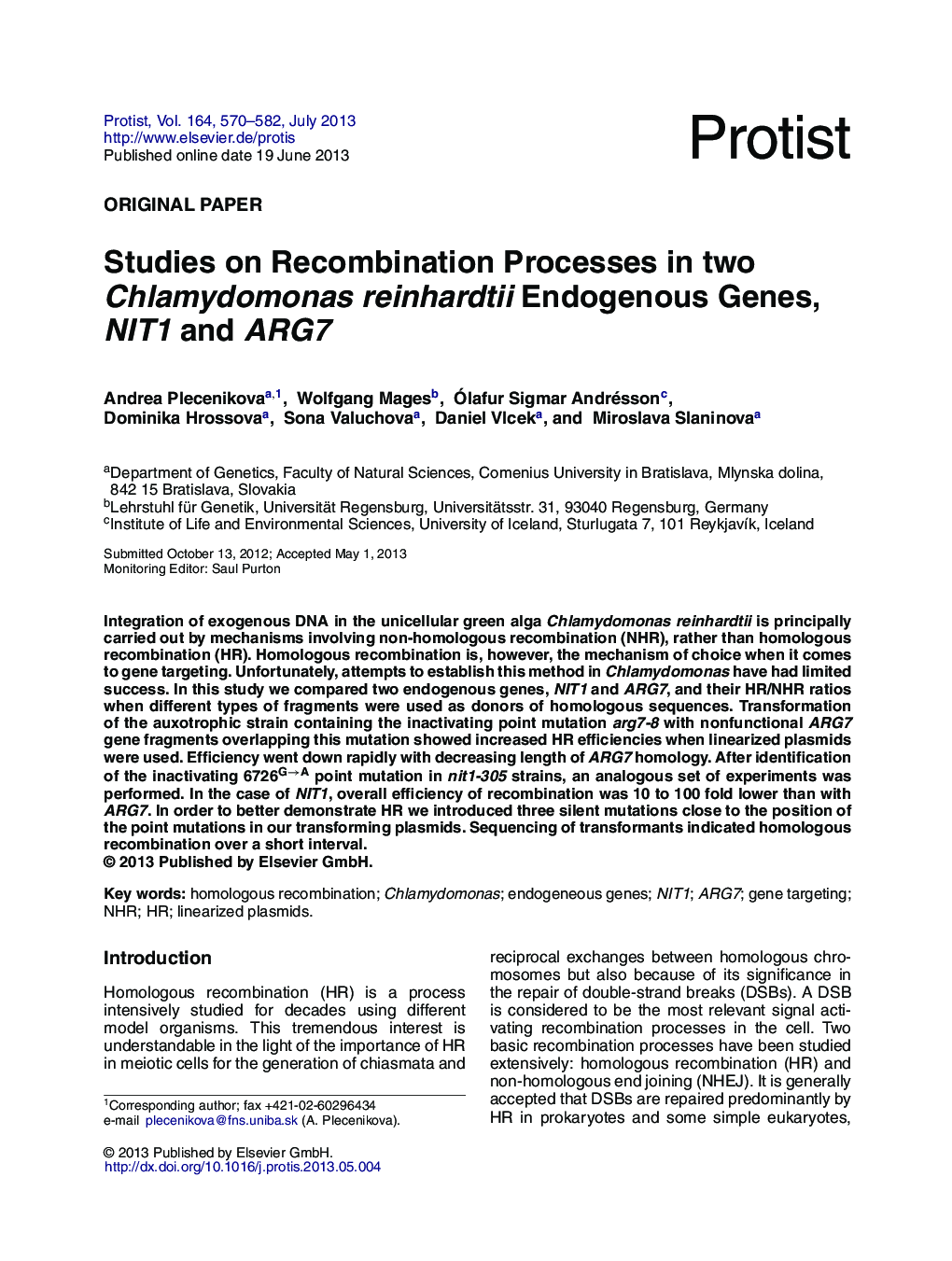| Article ID | Journal | Published Year | Pages | File Type |
|---|---|---|---|---|
| 2061815 | Protist | 2013 | 13 Pages |
Integration of exogenous DNA in the unicellular green alga Chlamydomonas reinhardtii is principally carried out by mechanisms involving non-homologous recombination (NHR), rather than homologous recombination (HR). Homologous recombination is, however, the mechanism of choice when it comes to gene targeting. Unfortunately, attempts to establish this method in Chlamydomonas have had limited success. In this study we compared two endogenous genes, NIT1 and ARG7, and their HR/NHR ratios when different types of fragments were used as donors of homologous sequences. Transformation of the auxotrophic strain containing the inactivating point mutation arg7-8 with nonfunctional ARG7 gene fragments overlapping this mutation showed increased HR efficiencies when linearized plasmids were used. Efficiency went down rapidly with decreasing length of ARG7 homology. After identification of the inactivating 6726G→A point mutation in nit1-305 strains, an analogous set of experiments was performed. In the case of NIT1, overall efficiency of recombination was 10 to 100 fold lower than with ARG7. In order to better demonstrate HR we introduced three silent mutations close to the position of the point mutations in our transforming plasmids. Sequencing of transformants indicated homologous recombination over a short interval.
